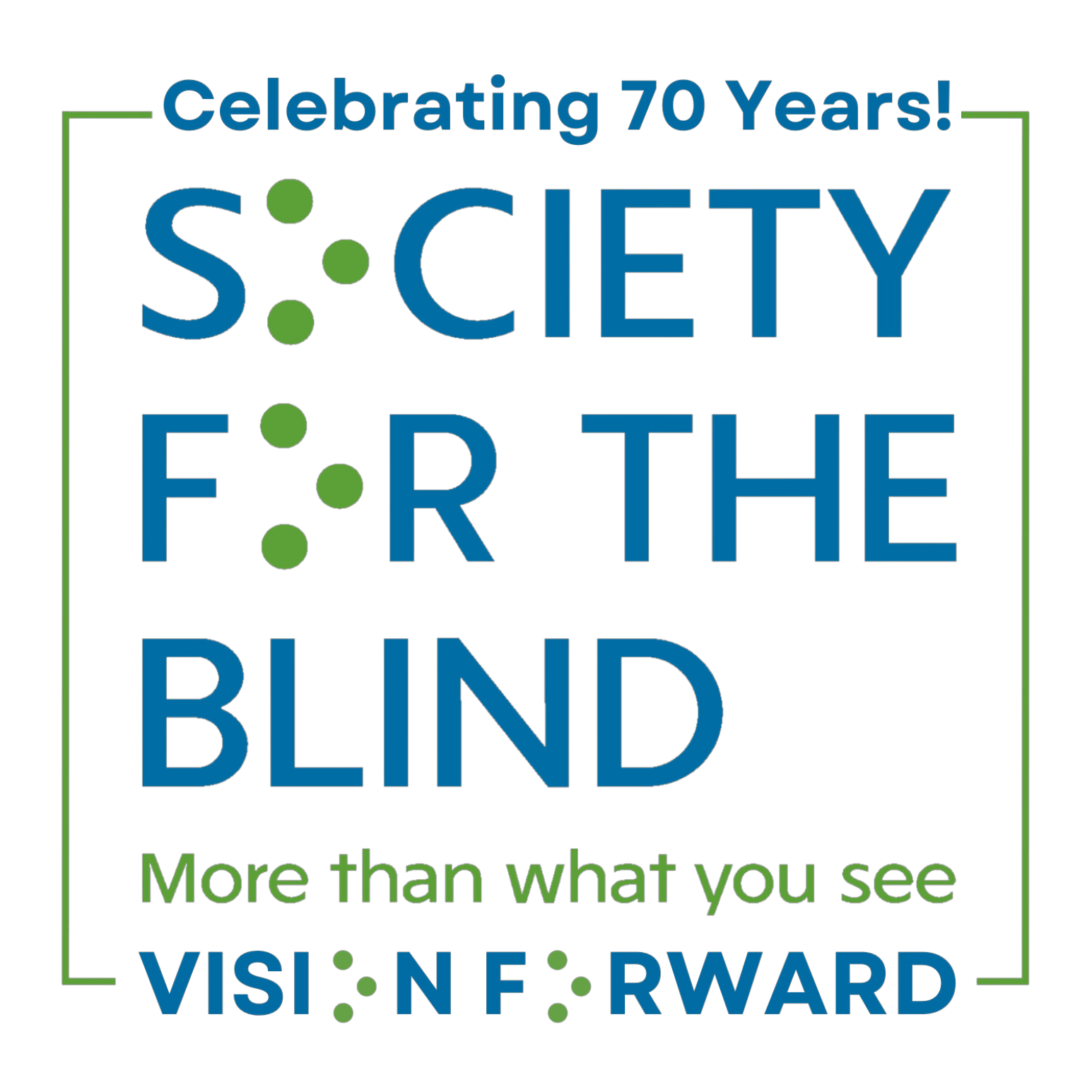Celebrating the Enduring Allure of Braille: Meet Elizabeth
Elizabeth Symington remembers the book that inspired her to learn braille. She was in college studying art and found a children’s book at the library, “A Color of His Own” by Leo Lionni, which paired color with texture and used braille. The book inspired a series of artwork she created in college, and it began her lifelong love of braille.
“All art is texture driven and designed to be touched, so that was my draw to braille,” Elizabeth said. “I also love the allure and mystery of writing in a secret code.”
Fully sighted, Elizabeth decided to learn braille, starting with “A Very Hungry Caterpillar” by Eric Carle. She became a certified braille transcriber and executive director of the Sacramento Braille Transcribers, which produced the braille children’s books she loved. When the group merged with Society for the Blind in 2022, she began running Society for the Blind’s Braille Production and Training Program and will receive her credential and master’s degree in May to become a teacher of the visually impaired.
In braille’s 200th anniversary year, Elizabeth found herself with an extraordinary opportunity: This month, she went on a two-week trip to Paris with friends to study the history of braille and current usage, and to visit the small town of Coupvray outside Paris where Louis Braille lived. Exploring Coupvray was a highlight of her trip. She walked through his neighborhood and experienced a two-hour tour of his home.
“I learned so much at Louis’ home,” Elizabeth said. “So much was on display, and the tour guide let us touch whatever we wanted. It was really magical.”
She toured the school where he taught, which is still in operation today with 125 kids in elementary through high school studying and living there and learning to find their career passions. Across the street is a school for adults with vision loss, and Elizabeth was struck by the number of people with low vision walking on the streets.
“I’ve never seen so many blind people walking around a city,” Elizabeth said. “Everywhere I looked, there was someone with a guide dog or cane out there being independent. I was seeing Louis’ legacy, and it was really powerful.”
Elizabeth visited the church where Louis played the organ, and even went to his gravesite with wine and cheese and “just hung out with Louis,” she said.
“Sometimes heroes can be larger than life,” Elizabeth said. “Visiting his grave reminded me he was a human and had his own struggles. He was an organist, teacher and inventor, but he also was human.”
On Elizabeth’s trip, she was fascinated seeing how France is using braille and supporting people who are blind or low vision in public spaces. At the pharmacy, there were brailled boxes of painkillers on the shelves. In museum exhibits, there were braille and tactile models that people could touch. She said the braille was accurate, the dots were in good condition, and she could tell the creators knew how to communicate using texture.
Elizabeth came home even more inspired to get people of all visual abilities excited about braille.
“Seeing how France is using braille and supporting people who are blind and low vision in public spaces really inspired me to want to make braille as cool as American Sign Language is,” Elizabeth said. “I want people to say, ‘You read braille? Awesome!’ Braille is literacy and so important, and I want to reduce the stigma around it.”
Through the Braille Production program at Society for the Blind, Elizabeth is seeing a high demand for braille. The program has about 30 transcribers nationwide with different specialties, from standard braille and varying language translations to tactile graphics, brailled music and proofreading. The program produces the Braille and Talking Book Library’s newsletter, playbills for various theaters and more. Eventually the program will include a training component where people with vision loss can train to produce braille as a career.
Elizabeth also works to inspire people to learn braille through her YouTube channel where she shows different ways to practice braille, including making brailled greeting cards and creating a chocolate bar mold with braille letters on it so people can practice while making chocolate.
“You can spend a lifetime becoming an expert in one aspect of braille,” Elizabeth said. “I just love learning, and I love going to work every day. We have a strong and highly skilled team working with everyone from preschoolers up to seniors. I’m really proud of all that we do at Society for the Blind.”
- A museum display of a braille slate and stylus alongside a portrait of Louis Braille
- A digital audio description panel alongside a carved bust of Louis Braille


